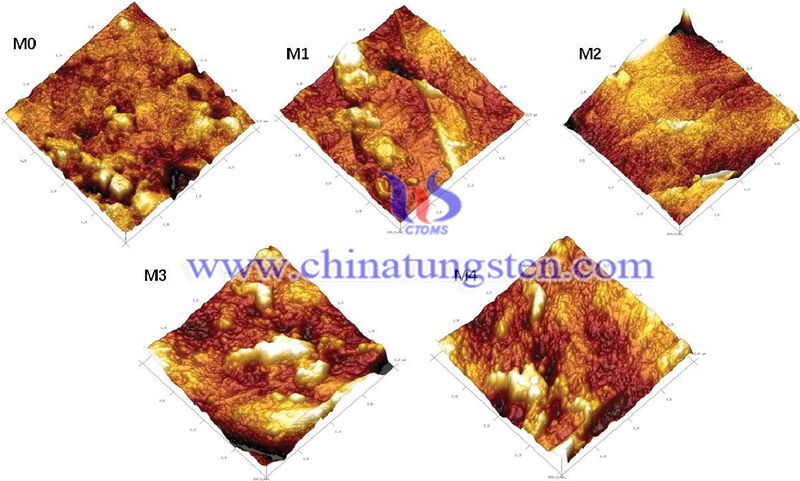Researchers Develop Enhanced PMIA Membranes by O-MoS2 Nanosheets Modification
- Details
- Category: Tungsten's News
- Published on Monday, 13 January 2020 17:54
Researchers develop the enhanced performance of poly (m-phenylene isophthalamide) (PMIA) composite hollow fiber ultrafiltration membranes by oxidized molybdenum disulfide (O-MoS2) nanosheets modification. Recently, Kaisong Zhang's research group published the result in the international journal Desalination and Water Treatment. Ph.D. student Qinliang Jiang is the first author, and researcher Kaisong Zhang is the corresponding author. This research was supported by the CAS Bureau of Frontier Sciences & Education and the Bureau Project of International Cooperation of the Chinese Academy Sciences.
Membrane separation technology has the advantages of simple operation, low energy consumption, no secondary pollution, etc., and its application fields are constantly expanding. At present, membrane separation technology, especially ultrafiltration technology, has been widely applied in many fields such as sewage treatment, water purification, protein concentration, enzyme condensation, and enzyme extraction due to its advantages of flexibility, high-cost performance, high efficiency, and environmental friendliness.

However, traditional high molecular polymer hollow fiber ultrafiltration membranes have been widely used due to their low mechanical properties, low water flux, poor hydrophilicity, and anti-pollution performance. To reduce costs, enhance the membrane's pollution resistance, extend the membrane's service life, and prepare a hollow fiber ultrafiltration membrane with high hydrophilicity and high anti-pollution performance is the key.
In recent years, most research hotspots have focused on improving the performance of membranes by introducing inorganic two-dimensional (2D) nanomaterials. Typical two-dimensional nanomaterials, such as graphene oxide (GO) nanomaterials and their derivatives, have shown broad potential in membrane separation due to their high aspect ratio, low density, good mechanical properties, and ability to provide additional water channels application prospects.
To address these problems, the Membrane Science and Technology Research Group (Kaisong Zhang's research team) of the Chinese Academy of Sciences Institute of the Urban Environment further functionalized the two-dimensional nano-layer material of molybdenum disulfide through acid treatment, oxidation, and ultrasonic processes to prepare highly hydrophilic modifiers for oxidation molybdenum disulfide and blended as a modifier in a casting film solution to prepare a PMIA/O-MoS2 composite hollow fiber ultrafiltration membrane, which can improve the membrane's permeability and anti-pollution without reducing the retention rate.
The two-dimensional oxidized molybdenum disulfide nanosheets were synthesized as a modifier to fabricate a novel PMIA/O-MoS2 composite hollow fiber ultrafiltration membranes (HFUFMs) by blending O-MoS2 nanosheets in the dope solution. The prepared the nanosheets were subsequently characterized by X-ray diffraction, Raman spectroscopy, thermogravimetric analysis (TGA), energy dispersive spectroscopy, and zeta potential. The effects of the nanosheets on membrane properties, including morphology, hydrophilicity, mechanical strength, surface zeta potential, ultrafiltration performance, and antifouling characteristics, were also evaluated.
The experimental results show that compared with the original MoS2, the Zeta potential is lower and the hydrophilicity is better, with the addition of oxidized molybdenum disulfide, the Zeta potential of the surface of the composite hollow fiber membrane is increased, and PMIA hollow fiber ultrafiltration membrane surface-enhanced hydrophilicity (contact angle decreased from 72.9° to 55.3°). The unique properties of O-MoS2 nanosheets endowed the membrane with improved hydrophilicity (contact angle: 55.3° ± 1.2°), electro-negativity (–34.6 ± 2.5 mV, pH = 6.5) and mechanical strength (4.2 ± 0.1 MPa). This study shows that the nanosheets could be an effective modifier to enhance the performance of PMIA membranes.
| Molybdenum Supplier: Chinatungsten Online www.molybdenum.com.cn | Tel.: 86 592 5129696; Fax: 86 592 5129797;Email:sales@chinatungsten.com |
| Tungsten News & Prices, 3G Version: http://3g.chinatungsten.com | Molybdenum News & Molybdenum Price: http://news.molybdenum.com.cn |



 sales@chinatungsten.com
sales@chinatungsten.com